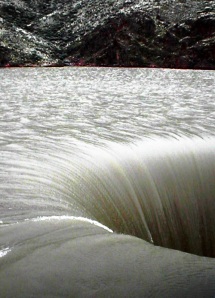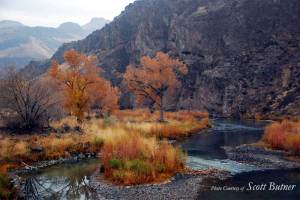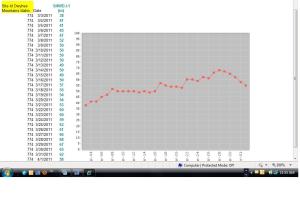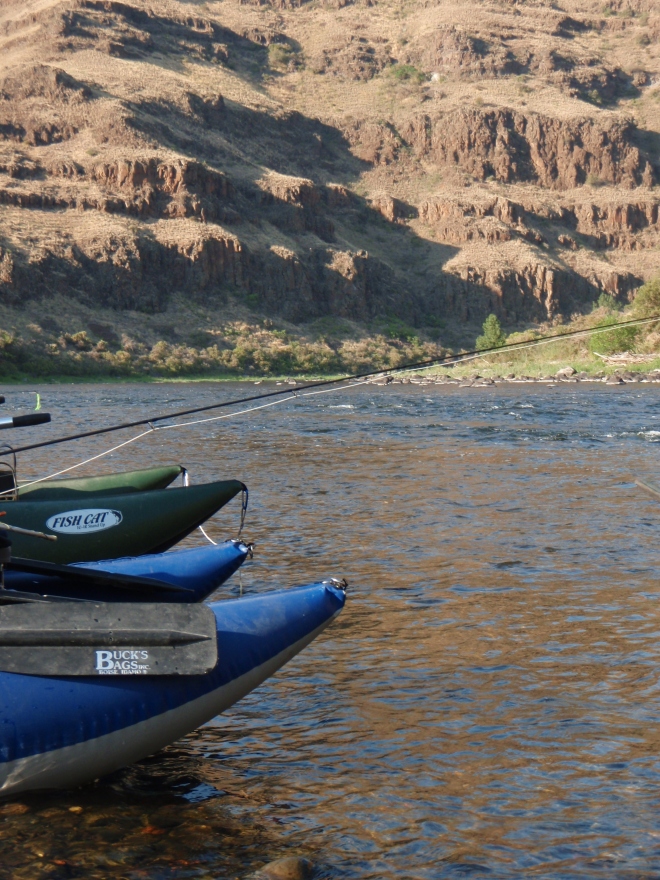When the weather warms, many anglers get overly confident in their wading. Many go for comfort and ditch the wading belts, many try to wet wade ( at water temps of 52 degrees) when the air temps are really hot, many drink beer or other alcoholic beverages in efforts to keep cool. None of these methods are a good fix for hot weather.
Although we don’t exactly know what happened, we do know that someone lost their life on our home river (the Owyhee) last night. Rivers, streams, lakes, oceans and all bodies of water are unpredictable. Use caution, all the time, every time. Use the wading staff, link arms with someone while crossing a river, don’t drink alcohol while navigating water bodies. Use the wading belts to at least slow down the water coming into waders. If you do end up falling in the water, point your body down stream or at the very least diagonally down!
Keep cool on those hot dog days of summer…here are some tips:
1) Hydrate with water, reduce caffeine consumption. Don’t drink liquids that contain alcohol, or large amounts of sugar—these actually cause you to lose more body fluid. Also avoid very cold drinks, because they can cause stomach cramps.
reduce caffeine consumption. Don’t drink liquids that contain alcohol, or large amounts of sugar—these actually cause you to lose more body fluid. Also avoid very cold drinks, because they can cause stomach cramps.
2) Frog toggs are a wonderful way to keep cool: The Chilly Pad® provides an innovative way to cool down while enduring outdoor heat and/or high levels of physical activity. Perfect for anyone engaged in sports or work, the Chilly Pad is made from a hyper-evaporative material that retains water while remaining dry to the touch. When wet, the towel begins to evaporate and cool, providing cool, soft comfort to the user. When it stops cooling (about 1-4 hours, depending on conditions), you simply re-wet the towel in hot or cold water and wring it out. Within minutes, it’s cool again. It’s also machine washable, and comes in its own storage container for years of reliable use. Handy size: 27″ x 17″
3) Sit is out during the hottest part of the day or go find shade to cool off in.
4) Sunscreen every place that’s exposed. Sunburn affects your body’s ability to cool itself and causes a loss of body fluids. It also causes pain and damages the skin. If you must go outdoors, protect yourself from the sun by wearing a wide-brimmed hat (also keeps you cooler) along with sunglasses.
5) Avoid eating heavy or hot meals before venturing out in the heat, they add heat to your body.

Heat Stroke or Heat Exhaustion?
Heat Stroke
Heat stroke occurs when the body is unable to regulate its temperature. The body’s temperature rises rapidly, the sweating mechanism fails, and the body is unable to cool down. Body temperature may rise to 106°F or higher within 10 to 15 minutes. Heat stroke can cause death or permanent disability if emergency treatment is not provided.
Recognizing Heat Stroke
Warning signs of heat stroke vary but may include the following:
- An extremely high body temperature (above 103°F, orally)
- Red, hot, and dry skin (no sweating)
- Rapid, strong pulse
- Throbbing headache
- Dizziness
- Nausea
- Confusion
- Unconsciousness
What to Do
If you see any of these signs, you may be dealing with a life-threatening emergency. Have someone call for immediate medical assistance while you begin cooling the victim. Do the following:
- Get the victim to a shady area.
- Cool the victim rapidly using whatever methods you can. For example, immerse the victim in a tub of cool water; place the person in a cool shower; spray the victim with cool water from a garden hose; sponge the person with cool water; or if the humidity is low, wrap the victim in a cool, wet sheet and fan him or her vigorously.
- Monitor body temperature, and continue cooling efforts until the body temperature drops to 101-102°F.
- If emergency medical personnel are delayed, call the hospital emergency room for further instructions.
- Do not give the victim fluids to drink.
- Get medical assistance as soon as possible.
Sometimes a victim’s muscles will begin to twitch uncontrollably as a result of heat stroke. If this happens, keep the victim from injuring himself, but do not place any object in the mouth and do not give fluids. If there is vomiting, make sure the airway remains open by turning the victim on his or her side.
Heat Exhaustion
Heat exhaustion is a milder form of heat-related illness that can develop after several days of exposure to high temperatures and inadequate or unbalanced replacement of fluids. It is the body’s response to an excessive loss of the water and salt contained in sweat. Those most prone to heat exhaustion are elderly people, people with high blood pressure, and people working or exercising in a hot environment.
Recognizing Heat Exhaustion
Warning signs of heat exhaustion include the following:
- Heavy sweating
- Paleness
- Muscle cramps
- Tiredness
- Weakness
- Dizziness
- Headache
- Nausea or vomiting
- Fainting
The skin may be cool and moist. The victim’s pulse rate will be fast and weak, and breathing will be fast and shallow. If heat exhaustion is untreated, it may progress to heat stroke. Seek medical attention immediately if any of the following occurs:
- Symptoms are severe
- The victim has heart problems or high blood pressure
Otherwise, help the victim to cool off, and seek medical attention if symptoms worsen or last longer than 1 hour.
What to Do
Cooling measures that may be effective include the following:
- Cool, nonalcoholic beverages
- Rest
- Cool shower, bath, or sponge bath
- An air-conditioned environment
- Lightweight clothing
Heat Cramps
Heat cramps usually affect people who sweat a lot during strenuous activity. This sweating depletes the body’s salt and moisture. The low salt level in the muscles may be the cause of heat cramps. Heat cramps may also be a symptom of heat exhaustion.
Recognizing Heat Cramps
Heat cramps are muscle pains or spasms—usually in the abdomen, arms, or legs—that may occur in association with strenuous activity. If you have heart problems or are on a low-sodium diet, get medical attention for heat cramps.
What to Do
If medical attention is not necessary, take these steps:
- Stop all activity, and sit quietly in a cool place.
- Drink clear juice or a sports beverage.
- Do not return to strenuous activity for a few hours after the cramps subside, because further exertion may lead to heat exhaustion or heat stroke.
- Seek medical attention for heat cramps if they do not subside in 1 hour.
43.740716
-117.071826


 Beginning in September Dave guided elk and deer hunting, a grueling 6 weeks on horseback, mule back and by foot. This position came about only after Rhonda volunteered, in a summertime conversation that “Dave loves to hunt and is a great hunter”. That summer Rhonda was diagnosed with Degenerative Arthritis in her right hip and was scheduled for a total hip replacement in January, and in September we headed to Diamond D Ranch for a guiding and care taking position, that would last until Janaury.
Beginning in September Dave guided elk and deer hunting, a grueling 6 weeks on horseback, mule back and by foot. This position came about only after Rhonda volunteered, in a summertime conversation that “Dave loves to hunt and is a great hunter”. That summer Rhonda was diagnosed with Degenerative Arthritis in her right hip and was scheduled for a total hip replacement in January, and in September we headed to Diamond D Ranch for a guiding and care taking position, that would last until Janaury.










